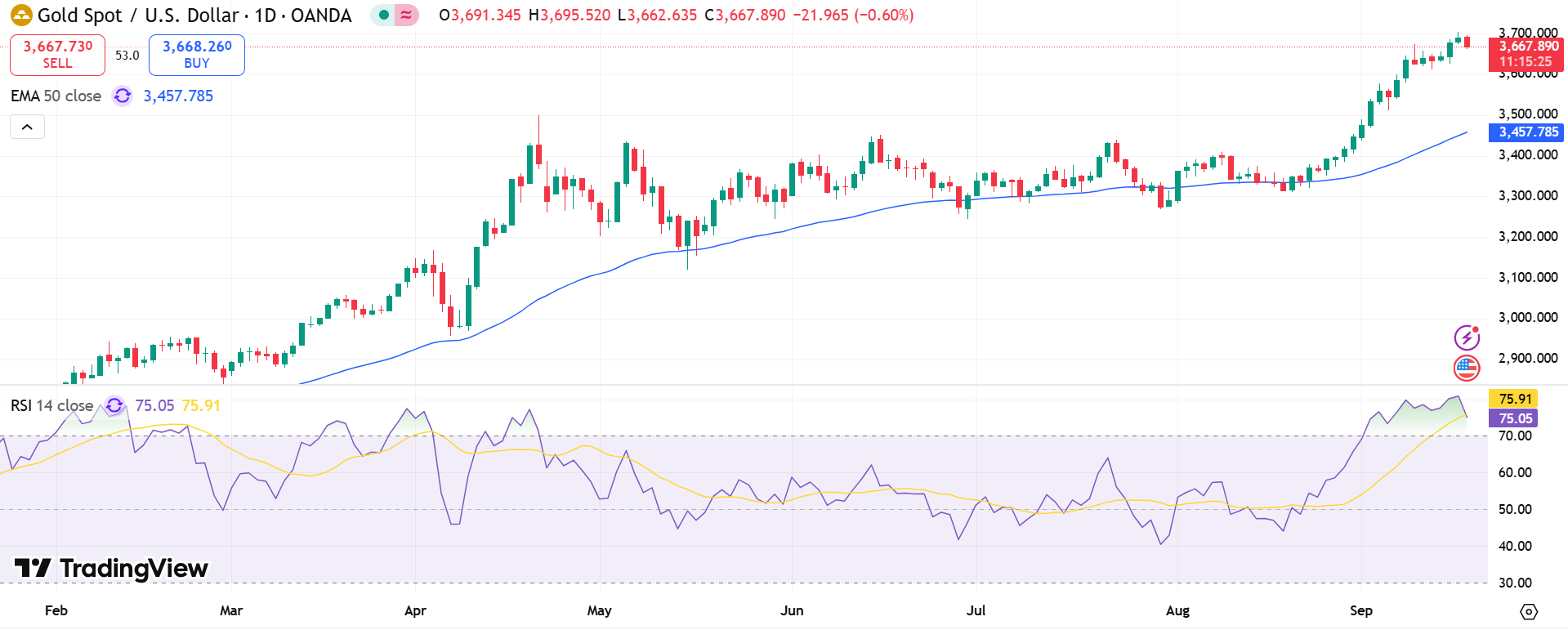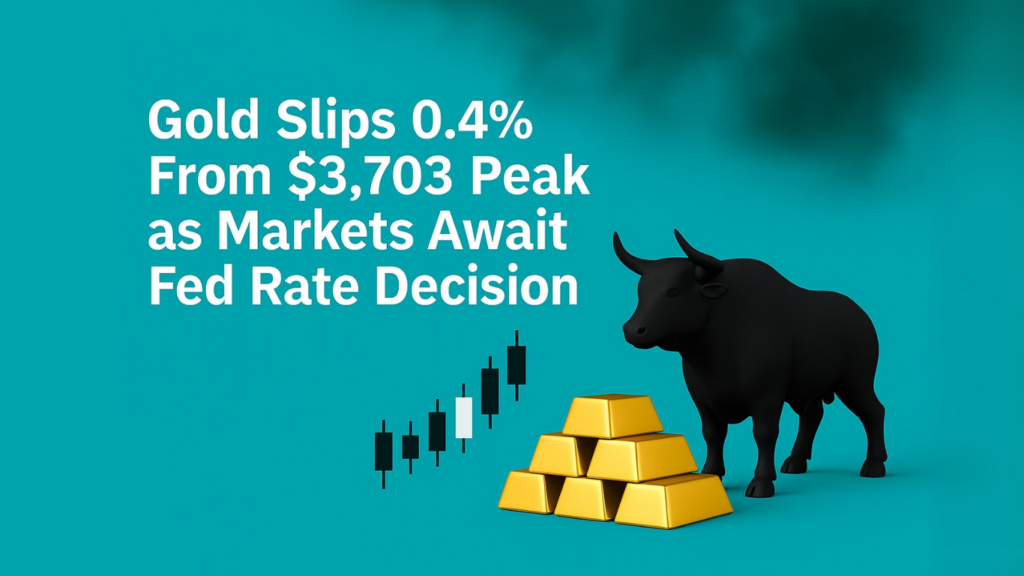Gold prices eased on Wednesday after setting fresh records earlier in the week, as investors shifted focus to the U.S. Federal Reserve’s latest interest rate decision. Spot gold slipped 0.4% to $3,673.38 per ounce by 02:40 ET (06:40 GMT), following Tuesday’s all-time high of $3,702.95. U.S. gold futures for December delivery mirrored the decline, down 0.4% to $3,710.77.
The pullback comes as traders brace for policy guidance that could reshape the trajectory of global markets. The Federal Reserve is widely expected to cut its benchmark federal funds rate by 25 basis points, lowering it to a target range of 4.00% to 4.25%. While this move has been priced in, investors remain fixated on the “dot plot” of policymakers’ projections and Chair Jerome Powell’s comments for clues about longer-term easing through 2026.
Fed Policy and Gold’s Safe-Haven Status
Lower interest rates traditionally bolster gold’s appeal by reducing the opportunity cost of holding non-yielding assets, pressuring the U.S. dollar, and reinforcing the metal’s status as a hedge against inflation and geopolitical uncertainty.
Key drivers shaping gold’s surge this year include:
- A 40% rally year-to-date, spurred by central bank purchases.
- Rising safe-haven demand amid conflicts in the Middle East and Ukraine.
- Policy uncertainty stemming from U.S. trade tensions under Trump.
The U.S. Dollar Index hovered near an 11-week low on Wednesday, lending support to bullion despite the immediate dip. Analysts at ING noted that concerns about the Fed’s independence will remain a focus, influencing both market sentiment and gold demand.
Metals Market Shows Broad Weakness

Precious and industrial metals mirrored gold’s retreat, as traders pared exposure ahead of the Fed’s policy statement. Silver futures slid 1.5% to $42.26 per ounce, while platinum fell 0.3% to $1,400.60.
In industrial markets, benchmark copper futures on the London Metal Exchange dropped 0.5% to $10,084.20 per ton, while U.S. copper futures shed 0.7% to $4.67 per pound.
The cautious tone across commodity markets underscores investor sensitivity to monetary signals. A dovish Fed could spark renewed momentum for gold, while a more hawkish stance may keep traders on edge.


